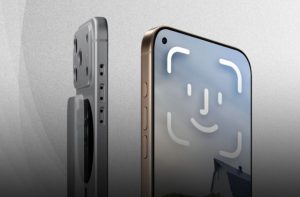The impossible that science can’t interpret emotions is no more. Measuring people’s responses to entertainment in the past have been low-tech; people might give a star rating to an application or a film, surveys online are taken, or simply describe how they felt while they were watching or playing something.
However, now scientists have access to a variety of bio-sensors which can tell exactly how an individual is responding to entertainment such as movies and TV shows; what gets their hearts pumping or what makes them sad etc.
The company engineering in audio since 1965, Dolby, has been working on a discreet project under its cinema branch at the San Francisco headquarters. The moviegoers may remember Dolby through labels, which tell if the sound has been remastered or the colour enhanced.
The scientists at Dolby wanted to know if the people were cognitively involved, or stressed. And they want this ‘bio-physical’ data to better sell their technology, the idea being that Dolby can show its Hollywood partners that a certain colour, surround sound or even a high dynamic range will elicit to the stronger response from people. The device Dolby uses to measure physiological emotions is a fabric-made helmet with several black button-like dots spread around, some have wires coming through them. The device is an EEG, which stands for electroencephalogram, letting Dolby measure small changes in the electrical signals from the brain. There are also 3 sensors connecting to the fingers; one of which is a heart-rate sensor and the other a lie detector. The company also has a thermal image of their test subject, along with several monitors showing the subject’s raw EEG signal, GSR signals and the heart rate. Dolby says that their biophysical labs have existed at Dolby since 2012. But over the past couple years they have ramped up the program significantly, part of the fact that these sensors are readily available now, and the fact that the displays are bright enough to trigger these kinds of reactions. In some cases, (such as when Dolby shows a video of burning fire to their subject) the displays get up to 20,000 cd/m2 (Candelas per square meter) in brightness, which can have a surprising impact on the human body.
Dolby is not the only entertainment company to study human emotion. This kind of effective computing has been around for decades. In recent years, companies like Netflix and Hulu have used eye trackers to better understand how people are reacting to their app interfaces. This does raise questions about privacy invasion which brings me to my next point.
All this bio sensory tracking raises the question around ethics of potentially using this data in a more manipulative way. If filmmakers or sound producers know how to trigger a response, so isn’t it possible for those tools to be abused. Say, an advertiser uses these tools to trick you into buying their product. It sounds too good to be true, but unfortunately, it isn’t. Nowadays, we are more immersed in video than ever before. For example, people nowadays like to watch the news instead of reading it in a newspaper, or to watch a cricket match on video instead of listening to it on the radio, whether it’s on a huge TV screen or a relatively small screen phone, or even right on our faces, like virtual reality. And Dolby scientists want to know how this is going to make us all feel, especially if entertainment becomes indistinguishable from the reality around us. So the next time you feel your face flush or your heart starts racing during a movie or a TV show, you might not be the only one, in fact, it may have been enhanced to trigger exactly that sort of reaction.
It may not hit the market for the next couple of years but once it is out, the price of having such a device in cinemas, studios and handy gadgets can be anybody’s guess. Better to think of a higher number because it won’t be a consumer product.













